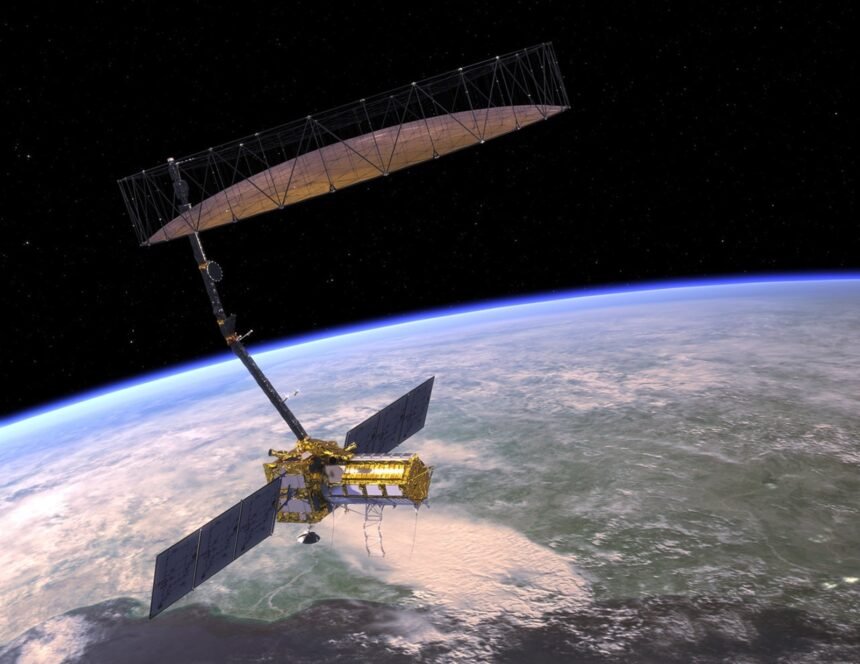The gigantic antenna reflector on earth observation satellite NISAR, a joint Isro-Nasa mission, has successfully “bloomed” in space, marking a significant milestone in the satellite’s deployment phase. Confirming the successful antenna deployment, Nasa said in a statement that the step-wise unfurling of the antenna reflector with a diameter of 39 feet was completed Friday.
NISAR (Nasa-Isro Synthetic Aperture Radar) is the first collaboration satellite of the Indian Space Research Organisation (Isro) and the United State’s National Aeronautics and Space Administration (Nasa). NISAR is the most expensive earth observation satellite ever built, weighing over 2.8 tonnes and costing $1.3 billion.
Isro launched NISAR on July 30 from the Satish Dhawan Space Centre in Andhra Pradesh’s Sriharikota, and it was later successfully inserted into a sun-synchronous orbit. NISAR is the first-of-its-kind space mission, which will study the earth’s solid, liquid and frozen landforms. It is designed to track even the smallest changes in ice sheets, glaciers, forest coverage, oceans, soil moisture, earthquakes, and volcanic activity.
NISAR is equipped with high-end dual radars that will be used to image the earth, once every twelve days. The onboard sophisticated radar systems form a combination of two synthetic aperture radar (SAR) systems: an L-band system and an S-band system, capable of peering through clouds and facilitating an all-weather imaging of the earth.
 Confirming the successful antenna deployment, Nasa said in a statement that the step-wise unfurling of the antenna reflector with a diameter of 39 feet was completed Friday.
Confirming the successful antenna deployment, Nasa said in a statement that the step-wise unfurling of the antenna reflector with a diameter of 39 feet was completed Friday.
“From innovative technology to research and modeling to delivering science to help inform decisions, the data NISAR is poised to gather will have a major impact on how global communities and stakeholders improve infrastructure, prepare for and recover from natural disasters, and maintain food security,” said Karen St Germain, director, Earth Science Division at the Nasa headquarters.
Both the ISRO and NASA teams are currently focusing on fine-tuning the antenna and other components of the satellite.
After the deployment of the antenna, NISAR will continue to remain in its calibration and testing phase. NISAR will remain under a 65-day engineering phase, during which the preliminary tests and calibration will be performed. On day 65 (tentatively early October), the first, full-frame scientific data will be taken and the science teams will check for its quality and other parameters.
Story continues below this ad
According to the NISAR team, the actual science phase of the mission will commence on day 70 (tentatively mid-October) onwards. Upon receiving data of the desired quality, it will be made available for use.
The scientific commissioning phase of NISAR will commence on day 90 (tentatively early November).








